Solar power in Malaysia – the residential area solar roof
March 15th, 2011 | by Sean |‘Part two’ has some better images that should make things a bit clearer!
I keep suggesting this as a ‘real’ solar power alternative whenever someone says (as they invariably do) that solar power cannot produce enough energy to compete with traditional sources. Alternative power sources are in the news at the moment, as Japan’s earthquake and tsunami woes are compounded by exploding, non-productive nuclear power stations. Malaysia is also planning to have the first nuclear power station in South East Asia, led by Minister Peter Chin, a man who responded to requests for reassurances that wind-borne fallout from Japan would not fall on Malaysia with “don’t speculate”. Perhaps I’m confused. I think it is his job to give the Malaysian people the information they need to reassure them about their safety and that of the people they care about. He seems to believe his job is to reassure speculators that they can go ahead and build a nuclear reactor in Malaysia come what may.
It’s reasonably obvious to most people that plonking a few solar panels on the roof of a house that was designed to shed rain is not going to solve anybody’s power supply problem. The best that can be hoped for from an expensive one-off installation like this is to shave a few pennies off one’s electricity bill in good weather. Malaysia, although it’s near the equator, doesn’t have quite as much sun as you’d expect – it mostly has punishingly sweaty heat. It’s not bad though. Figures in this article are taken from an insolation map at Wikipedia from which I reckon that Malaysia has an average insolation of 200W/m². The good thing about Malaysian sun is that it’s about the same all year round. The worst thing about sun in the UK – for example – is that it’s best in the summer, when everybody wants to go outside and not use any electricity, and worst in the winter, when everybody wants to stay indoors and turn the heating on.
I’ve been toying with this idea for quite some time. Solar obviously needs large expanses of plan area because the power density of solar radiation is low, compared to that of a traditional power station furnace. Dedicating land to such a project makes its price prohibitive. The great thing about solar photovoltaics is that they don’t need dedicated plan area, as evidenced by their current most likely deployment – plonked on your own house roof. One house’s roof is too small a scale to create a solar power station though, so on a recent visit to a coal-fired power station near Pontian in Malaysia, I noticed that the dry end of the coal yard was covered by a huge roof, far, far above the coal heap below. Why not do this for solar?
On a family holiday in Kuala Terengganu a few weeks ago, we spent a delightful afternoon on Pulau Kapas, where tucked away behind a fence by the jetty is a combination diesel / solar power station. There are several solar arrays on short legs fixed to the ground, but the diesel generator shed itself is shaded by a single, separate ‘sun roof’ that is entirely covered on its top surface by solar panels. This is how I think Malaysia could implement solar power stations – by combining them with residential / commercial developments. A standard (modern) Malaysian house is like a large concrete solar oven. Why not shield it from solar radiation, and at the same time convert that radiation to usable power?
Here’s an image taken from Google Maps of the housing development where I live which I’ve crudely edited to show how I think solar panels could be added to such a development. (The picture is a few years old, and the built-up area has since more than doubled). The 7 solar roofs in the image, 180×50=9,000m², 60×40=2,400m², 80×40=3,200m², 100×40=4,000m^2, 60×40=2,400m², 75×40=3,000m², 90×40=3,600m² have a total area of 27,600m². Using baseline figures of 1KW/m² for peak insolation and 200W/m² for average insolation, power input from the sun is 27.6MW peak, 5.5MW average. Using a photovoltaic efficiency of 10%, peak electrical output is 2.76MW, average is 550KW.
The price of the work is likely to be dominated by the expense of covering such a large area in solar panels. Searching online for solar panels in early 2011, I see a minimum price of USD1.65/W for a minimum order of 10 panels. I think this could be cheaper for a purchase of thousands of panels, but let’s use that. Working backwards from the peak power output, the cost of solar panels for an installation such as the one shown here would be 2.76M * 1.65USD = 4.6million US Dollars, or about 14million Ringgit.
If the output of the solar roof was sold to the national grid as though from a power station, and we thank the government in advance for mandating that power from solar should be bought by the grid at commercial residential rates (about 40sen per KW/h), then this installation’s nominal average income from the grid should be RM220 per hour, or about RM37,000 per week, Rm1.9m per year. At that rate the investment would take about 8 years to pay off the cost of the solar panels alone. I see notes online to the effect that the solar panels are around half the cost of the project, so let’s say the project’s build cost is equal to around 15 years’ operation. If the price per Watt for panels is lower than that quoted, this timespan is reduced. The same goes for an increase in efficiency from 10%.
The way I envisage this working on a personal level is that I would buy a house in such a development and live in it. I would buy electricity from the national grid at residential rates. The ‘solar roof’ would be owned and operated by a power generation company, not related to me in any way. There would be a legal right on the deeds of my house for the power company to use so many plan square metres in the void immediately above my house (say 2metres to 5 metres above my house, weight per square metre and thickness restricted to avoid cynical development) in return for that right, the power generation company would pay each homeowner a small monthly ‘rent’ of RM10 or so.
There are additional benefits. The solar roof would function as a shade for the houses below, reducing the need for air conditioning. If designed carefully, the void between the bottom of the solar roof and the roof of the house below may encourage air-flow, further reducing need for forced cooling. If the solar roof were also function as a rain roof with its own guttering and downpipes, the houses beneath would be exposed to less weathering and hence require less maintenance. It would even be possible to supply local hot water either from solar-heated tanks or from the power conditioning / storage equipment’s cooling system, reducing the need for expensive-to-run bathroom water heaters.
The timescales for projects like this to make a sizeable contribution to power supply in already built-up areas is long. It is almost certainly not possibly to retro-fit such a project to an existing development. It would have to be designed in before building commenced. In areas such as East Malaysia where development is still at an early stage, the relative contribution from new development would be much greater. A modest-sized development such as that shown here could be generating a few MW of excess power during office-hours.
I’d be interested to know what you think. Particularly, I’d be interested to know whether you could see yourself living in such a development. If you have any questions, don’t hesitate to ask, and I’ll do my best to answer or – hopefully – someone who knows will see your question and help out. The worst part of a development like this is that it doesn’t offer the same opportunities for trimming off fat in the form of commissions, leakages and ‘contingencies’ that a mega-project like a dam, nuclear or fossil-fuel power station offers. It’s totally transparent (!), so it won’t attract get-rich-quick speculators. It needs massive public support to make it a reality. Will that come?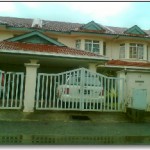
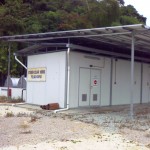
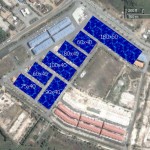
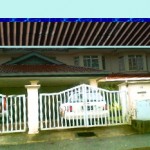
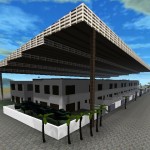
6 Responses to “Solar power in Malaysia – the residential area solar roof”
By lim yen chung on Jan 2, 2012 | Reply
the dollar and cents calculations do not make sense. it takes some many millions of years to produce this fossil fuel and we burn it in no time and leave nothing to our children and after.
the dollars and cents calculations is man made and doomed to reach a dead end. nature is not sitting back and the backlash is already on the way in the form of climate change !
By Kim on Jun 27, 2012 | Reply
Hi actually they are people looking for solar powered their house, unfortunately it was never widely advertise, or should we say ‘awareness not there” . Recently I have search Internet and found a few co. Doing it for residential, am sending enquiries for my new home.
Building a roof, whether concrete / clay / steel is not cheap. So am considering to use photovoltaic panel. Will update again after I got the feed back.
But I also come yo know that uni solar is market in singapore for residential, why not in Malaysia? Funny right.
By Sean on Jun 27, 2012 | Reply
I’d be interested to know how you get on. You’re right about under-developed market in Malaysia. I bought a box of solar panels 8W-12W output direct from a company in Shanghai when I lived near PD 6 years ago and it was very cheap compared to ‘street price’ in Malaysia. That was also before Malaysia had any PV production, so no import duty. Maybe you would have to pay duty now? I’m pretty sure I got some emails from that supplier to inform me they had been taken over by a global VC organisation, and then I lost touch with them. You should definitely shop around and try some direct enquiries if you’re going to make a large order.
Are you going be dual-powered (solar + grid) or thinking of going off-grid? Here in the UK, the electricity companies are now all privatised, but I suspect the energy market is not fully competitive. I’m intending to try some ‘off-grid’ plans for my next house. Unless you go down the route of power-company-renting-sky-over-house, then I guess your best option is to make sure your builder aligns your largest, flat roof pitches with the ‘best sun’ for your location. A PV supplier should be able to advise you and your builder.
By ahmadalias on Jul 7, 2012 | Reply
I am ready to make the leap from 100 % grid to dual use of grid/solar but the cost to an individual like me is too prohibitivly expansive. The present and forseeable market forces are stacked against solar power, not suprising with the ever entrenched interest of fossil fuels stakeholders. Unless an eccentric billionare comes along to challenge the grip of these power holders by offering an affordable finance scheme, the solar wannabes would not have a chance to make this transition. aa
By Sam on Dec 14, 2012 | Reply
Hey man! Solar can at least cut our electrical bill by half! Instead of using the conventional aircond, why not buy a hybrid one? I say go for natural unlimited energy!